Analytical Instrumentation: How Low Can You Go?
Today’s analytical instrumentation is answering the call to finding extremely low levels of unwanted chemical contaminants in food.
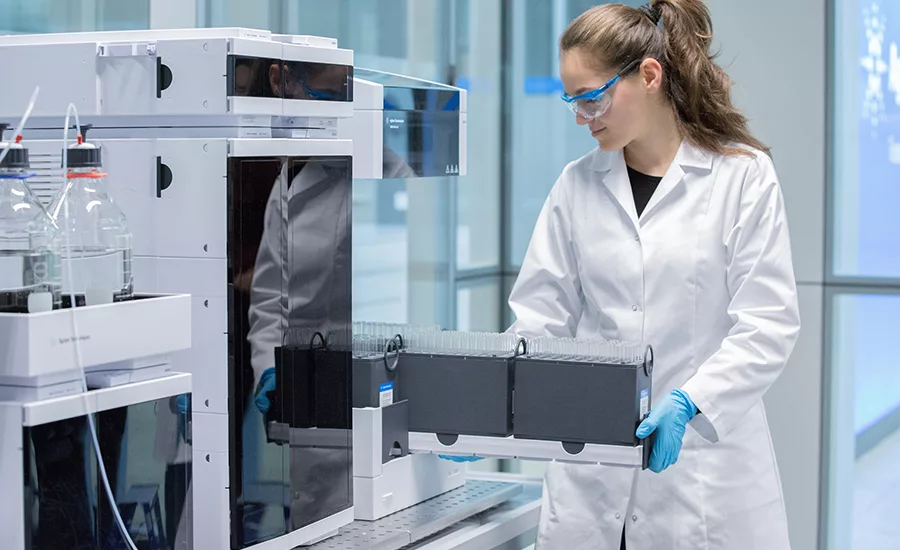
The Agilent 1290 Infinity II LC provides high sample capacity and fast injection cycles for effective and efficient detection of food processing chemical contaminants. Photo courtesy of Agilent
Residual and potentially dangerous chemicals in food and drinking water have been in the news lately (see this month’s Manufacturing News for an update on PFAS) as one such report found that 80% of urine samples drawn from children and adults in the U.S. contained glyphosate. FOOD ENGINEERING has also had its share of news on heavy metals in food and baby food. Why are we seeing so much contamination? Because it’s there and because today’s analytical instrumentation is so much better at finding these very minute trace levels of contamination.
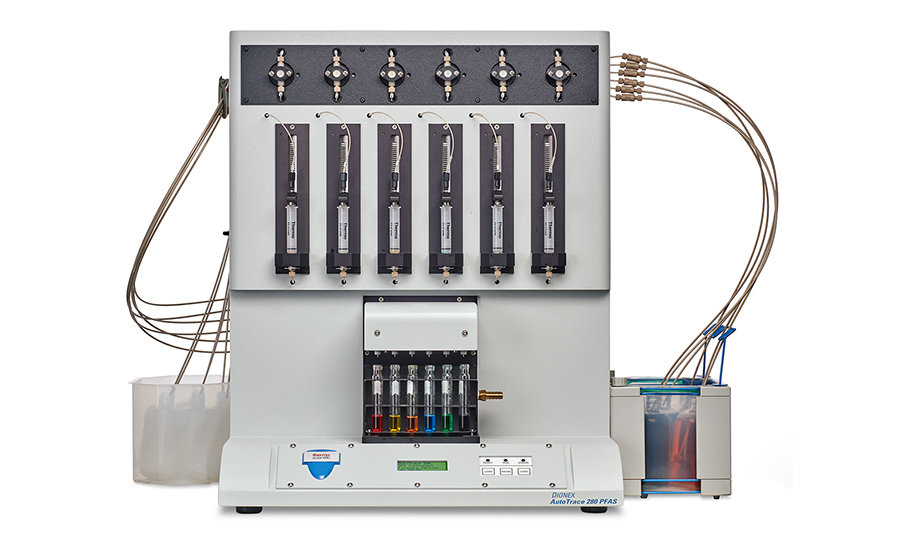
Over the years, we’ve observed that the sensitivity of analytical instrumentation has improved by many decades—from parts per million to billions—and trillions—and even quadrillions. These improvements have not gone unnoticed by EPA and FDA and other worldwide regulating bodies. We are all aware—or should be—that we have measurable levels of many harmful chemicals in our bodies, many of which come from the food we eat, beverages we drink or the air we breathe—and many of these chemicals remain in our bodies. Modern analytical instrumentation not only reveals to us the levels of these contaminants in our bodies, but also with the increased sensitivity (and less noise) in this equipment, all stakeholders have quantifiable and actionable data on what’s in our food and its ingredients.
But what should we expect of analytical equipment in the future—for example cost of ownership, quality of results, ease of use, the ability to test for critical factors that make a food or beverage special or unique? Food Engineering asked representatives from major equipment suppliers to provide a few details and options on how to take advantage of today’s analytical instrumentation.
From Basic Chemicals to Complex Organic Contaminants
What is the range of chemical constituents or other components that food and beverage processors are most interested in testing? Are they using the equipment primarily for improving food quality/recipes or testing for chemicals or other contaminants that could be detrimental or perceived as such to consumers—or lessening the brand image?
“The answer is both,” says Eberhardt Kuhn, Ph.D., Shimadzu Scientific Instruments unit manager for food and cannabis. “Fundamentally, food testing can be divided into two categories: things that are supposed to be in the food, i.e., ingredients and nutritional analysis, like antioxidants, vitamins, fat, sugar, etc., and things that are not supposed to be in the food, i.e., contaminants like pesticides or PFAS.”
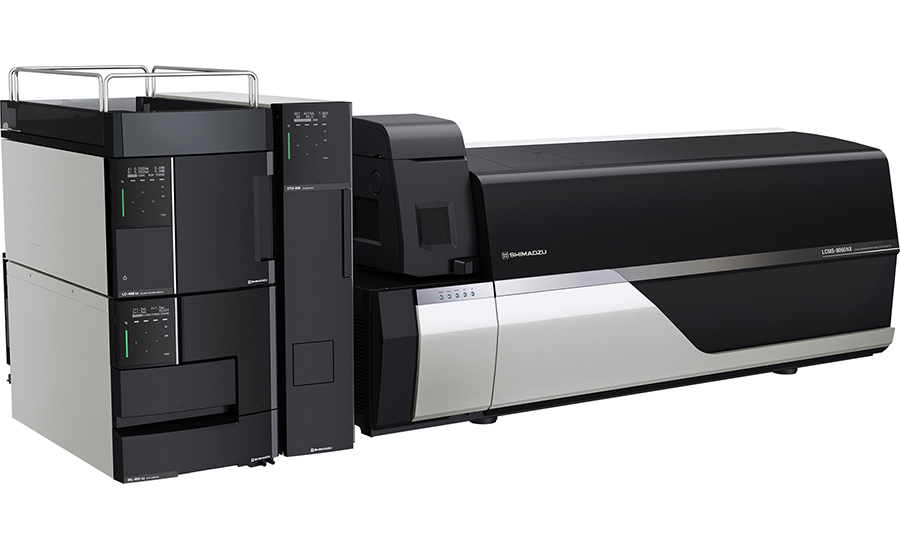
Food and beverage processors carry out testing for many different areas from product development to nutrition and safety with several tests needed in each category, says Tarun Anumol, director of global environment and food applied markets for Agilent Technologies. “Typically, food and beverage manufacturers will do testing when developing and researching their product to ensure they are getting the best taste, texture, flavor and nutrition while optimizing their food or beverage recipe. This typically happens in R&D where they want to measure known and unknown flavor components, nutrients, vitamins, sugars etc., but there may also be a need to understand complex biological systems and pathways involved with proteins and lipids in certain foods when cooked or stored. Once a commercial product is available to put on shelves, then companies typically focus on three specific areas of testing: food nutrition, food safety and food fraud/adulteration.”
Some chemicals like salt are part of a recipe, but other chemicals like those ranging from ammonia to chromium pose serious problems as food contaminants, says Roberto Marcos Perchin, product manager for KPM Analytics (AMS Alliance). “As an example, nitrites are measured in food and beverages because they are used together with nitrates as preservatives,” says Perchin. “If consumed in high concentration, nitrites may cause serious health problems, such as kidney failure. This is why there are strict limits in bottled water and other food additives. Testing is essential to ensure safety and compliance.”
Chemical instrumentation is also used in the beer and wine industries to monitor the process and ensure product consistency, adds Perchin. Brands can suffer severe damage and impact from product recalls and intoxication outbreaks if they do not comply with national and international food safety standards.
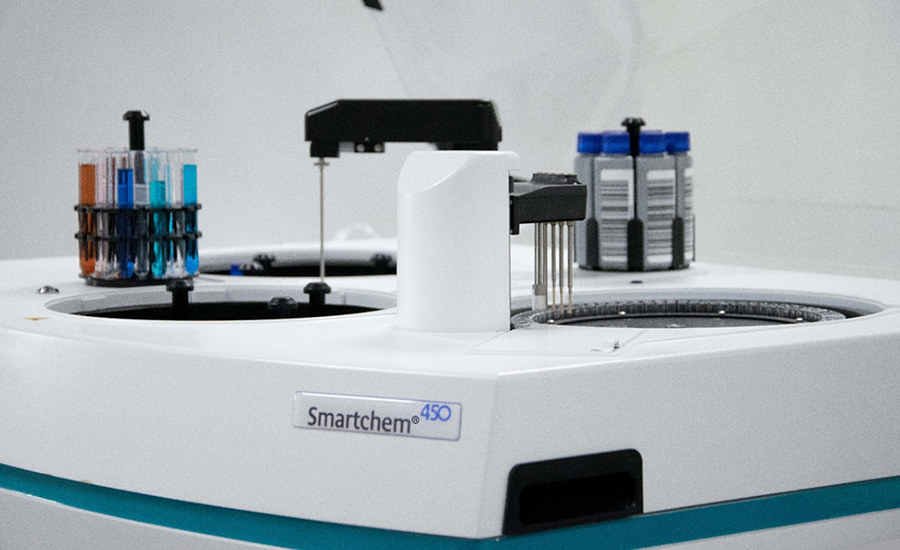
On another note, while a food processor may have an expert on board to check a product’s aroma, what happens when the expert has a bad cold or COVID-19 and temporarily loses the olfactory sense. Coupled with an extensive aroma database, a gas chromatograph mass spectrometer (GCMS) can be an effective method for developing a food or beverage product with a finely tuned aroma profile, according to Kuhn. On the contaminant side, a liquid chromatograph mass spectrometer (LCMS) is a critical tool for detecting pesticides and PFAS. Inductively coupled plasma mass spectrometry (ICP-MS) can be used to detect heavy metals in infant formula after the recent warning from the FDA about high levels of arsenic in baby foods. A recall can be devastating for a food brand, so accurate and reliable testing is absolutely critical for the safety of our food, says Kuhn.
Getting Creative with Costs
Some analytical equipment (e.g., chromatographs, mass spectrometers, etc.) is generally not seen as affordable to smaller and medium-sized processors. What are their options? Is the equipment becoming more affordable?
“I often talk to small and medium sized food companies to discuss their options with regards to purchase versus outsourcing,” says Shimadzu’s Kuhn. “For companies with a small number of samples being analyzed, it is often more economical to outsource testing. There are many highly qualified testing labs across the country that specialize in such analyses and offer a wide range of services.”
However, as a company grows, there comes a point where it becomes more cost effective to bring testing in house, says Eberhardt. “I show those customers our ROI (return on investment) calculation sheet, and they can easily calculate where that point is. And we consult with the customer to determine their exact needs so we can offer the least expensive solution(s) that will meet their testing requirements.”
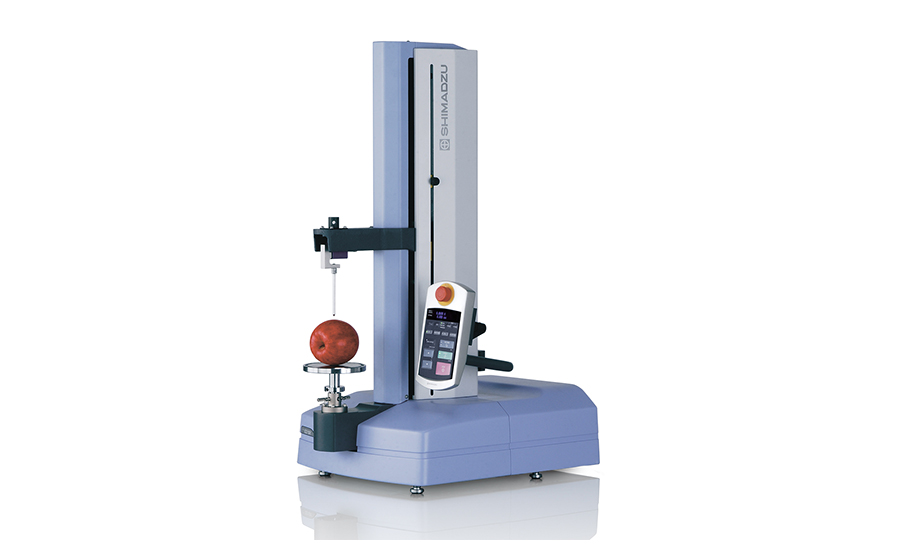
Large equipment has been seen as requiring highly trained lab personnel with test results that always seem to take longer than processors want. Agilent has been striving to make the equipment simpler to operate with speedier results, says Anumol. Continuous improvements are bringing about reducing the skills and labor required to operate this equipment and enabling the processing and analysis of larger samples.
While processors can, of course, opt to send samples out to a local lab, Agilent continues to seek alternative options to reduce costs, for example, by offering flexible spending and subscription models so processors can have access to analytical instrumentation without high capital costs.
“Another question for producers to consider is the economic and reputational value of a food safety or quality incident that could potentially lead to millions of dollars of lost product, or even litigation,” says Anumol. Regular and routine analytical testing can protect them against these issues. The focus is on providing processors with tools, training and expertise throughout their workflows so they can be up and running as quickly as possible with the best methodologies available to achieve reliable and high-throughput results for the analysis of several chemicals across food quality, nutrition, safety and adulteration, adds Anumol.
While some processors choose ion chromatography for inorganic analyses, discrete analyzers may offer the analyses functionality needed for their application at a lower cost, says KPM’s Perchin. A discrete analyzer, as Perchin describes it, is a wet chemistry platform for automated photometric and electrochemical analysis, which consolidates different techniques from an in-house lab into a single platform, optimizing the lab operation in terms of running samples, calibrations, standards, maintenance and operator training.
“A discrete analyzer provides a single platform that eliminates the need for dedicated instruments for specific analytes,” says Perchin. “Automated analyzers also save testing time because they can run samples in parallel. Ion chromatography requires 20 minutes per sample to be tested; KPM’s SmartChem discrete analyzer reduces testing time to less than 30 seconds per sample (once the first result is obtained).”
Targeting Tests: Advantages and Disadvantages
Wouldn’t it make sense to use specifically designed equipment such as discrete analyzers to test for certain analytes—or targets—as the equipment is less expensive than LC/GC/MS equipment?
For example, targeted testing will reveal your levels of nitrites, nitrates or potassium in your product because you’re testing for them. However, if you’re not necessarily looking for arsenic, you won’t find it unless you specifically test for it. So, if you have unusually high levels of arsenic in the rice ingredient you’re using, you may not find out until you send a final sample of your product out to the lab for a thorough untargeted test. Now that the lab found arsenic, you should add arsenic to your targeted list of analytes to test—especially if it is in the rice.
Back in 2007,FE reported on melamine in pet food, which killed several dogs and cats. While it was obvious that a fortified protein was added to wheat gluten to up the total protein level, no one was initially aware that a poisonous chemical, melamine, was added to falsify total protein levels. No targeted testing would have found melamine as no one was looking for it. Once discovered, it was then possible to do targeted testing to make sure melamine was not present in further wheat gluten products.
Discrete analyzer systems are designed to target specific analytes and ranges based on a food processor’s requirements, says Perchin. Once the methods are correctly set up, the systems’ user-friendly operation allows for immediate use, and their consolidation and automation capabilities allow the laboratory to increase its efficiency and capacity without compromising quality standards. In addition, such platforms easily allow laboratories to expand their range of testing analytes, as well as matrices.
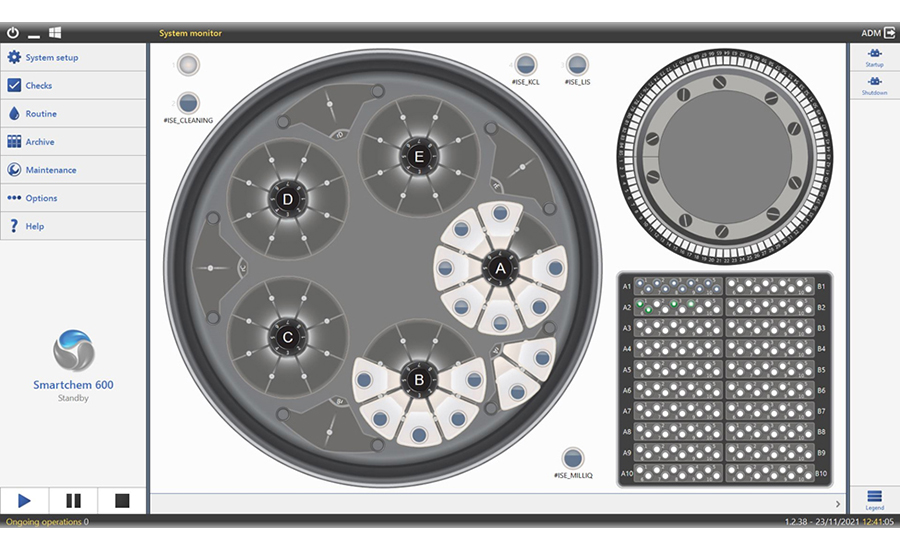
Therefore, should a processor use targeted or untargeted testing—or both? “That’s a tricky question because looking for unwanted chemicals and confirming the chemical composition (i.e., ingredients) are very different types of analysis that often require different analytical equipment,” says Shimadzu’s Kuhn. One of the key differences is the amount (level) of compounds you are looking for. On one hand, ingredients (chemical composition of the food) are typically in the percentage level or just below that, so they can be measured easily without the need for highly sensitive equipment, adds Kuhn. “For example, we have a Beer Analyzer to ‘easily, quickly, and affordably’ measure important beer parameters like color and bitterness.”
“On the other hand, unwanted chemicals, like pesticides, are present at very low levels in food (hopefully),” adds Kuhn. “And regulations continue to require lower and lower detection limits. Recently, the EPA proposed lowering the detection limits for PFAS in drinking water to ppq (parts per quadrillion)! Setting such extremely low detection limits pushes the capabilities of analytical instrumentation. Even at typical current levels for contaminants in the ppb (parts per billion) and ppt (parts per trillion) range, it is often challenging to accurately measure compounds at these trace levels. And such measurements require advanced, high-end instruments.”
Analytical instrument suppliers like Agilent provide several specific solutions for rapid and quick screening of specific foods or beverages. For example, a handheld FTIR instrument can be used to determine quality differences in food or even the detection of microplastics. Similarly, a handheld Vaya Raman instrument can be used for rapid identification of raw materials in food packaging—transparent or opaque. A single operator can easily receive and release large numbers of ingredient containers in a matter of hours, says Anumol.
When size is an issue, Agilent has shrunk a GC so it fits on a desktop—about the same size as a large gaming PC. The Intuvo GC operates on conventional power and can be used to analyze for food nutrition and chemical contaminants like pesticides.
Simplifying Usage
Analytical equipment suppliers are continuously making sample preps faster and equipment smaller, more powerful and easier to use, thus simplifying workflow. Software is an important part of the equation, and Shimadzu’s Kuhn says that the company’s LabSolutions software has been designed to work with nearly all of the company’s instruments—so lab technicians do not have to keep relearning software. Reports can be tailored to formats that meet individual needs and requirements.
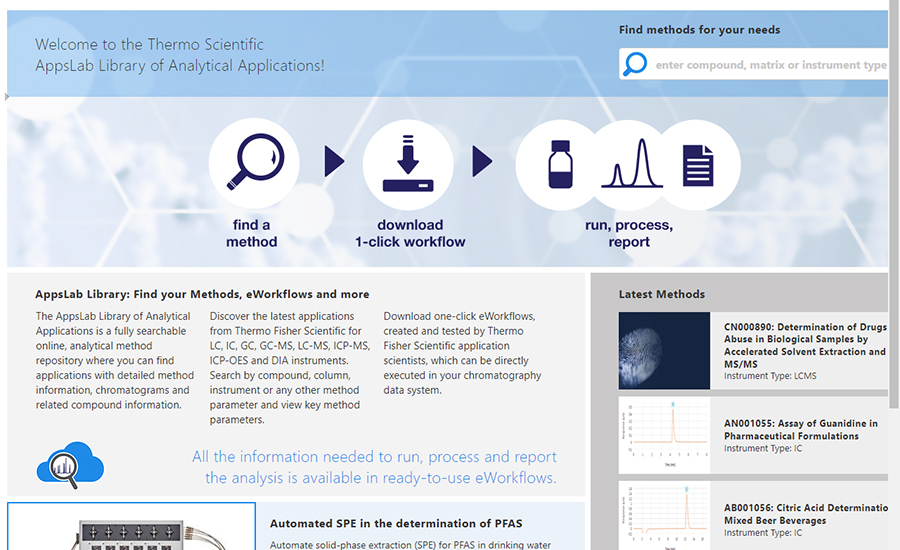
Speaking of software and the like, Thermo Fisher Scientific has created an AppsLab Library, which can be found online at appslab.thermofisher.com. You might think of this as “why reinvent the wheel,” when it comes to finding tests and workflows for Thermo Fisher Scientific equipment. The AppsLab Library of Analytical Applications is a fully searchable online, analytical method repository where you can find applications with detailed method information, chromatograms and related compound information.
KPM’s Perchin adds that results obtained from their analyzers are easily understandable by non-PhD operators, and KPM systems are equipped with retest and reflex testing capabilities—meaning they can automatically rerun samples in the case of nonconformity to the testing requirements. The company also offers online and onsite consulting when it comes to interpreting results and other areas of interpretation—as well as analytical troubleshooting and method implementation, fine-tuning and adjustment.
Analytical Testing: Food Nutrition, Food Safety and Food Fraud/Adulteration
Typically, food nutrition and food safety testing are required by regulators. Food nutrition testing normally involves anything that has to be included on the food or beverage label, such as sugars, carbohydrates, vitamins, added flavors etc., along with any other labeling claims that could involve, for example, zero calories, sugars, organic ingredients, etc. Besides a complete portfolio of instruments, supplies, consumables, services and expert consulting to support food and beverage processors, most suppliers also focus on providing users with end-to-end workflows that include tools for sample collection, sample preparation, instrumentation and data analysis tools. GCs and LCs can be used for analysis of amino acids, sugars, vitamins and other compounds, while inductively coupled plasma (ICP) instruments can be used for testing elements and nutrients in food and beverages. When coupled with software tools, food manufacturers can process and report data seamlessly, accurately and reliably.
In terms of food safety, these tests are typically governed by local regulations and are dependent on the final type of food or beverage product. Common tests include measuring pesticides using GC and LC coupled to tandem quadrupole mass spectrometers (MS/MS). A notable factor is the reduction in the labor and time involved in sample preparation with the provision of solutions and tools, such as enhanced matrix removal-lipid (EMR) and QUECHERS (industry acronym for “quick, easy, cheap, effective, rugged and safe”) products for sample preparation, providing lab technicians a full workflow from start to finish, including instruments and software. Other food safety tests include measuring heavy metals (using ICP-MS), veterinary drugs (with LC/MS/MS and LC-Q/TOF) in case of animal origin products, PAHs and other persistent organic pollutants that are regulated globally like dioxins, PCBs etc., (using GC/MS) and many others.
Finally, many food companies are also focused on protecting their brand identity, and this is where measuring for food adulteration or food fraud comes in. Adulteration is generally unintentional, but when intentional, and usually for economic gain, it becomes fraud. Historically, companies have monitored for specific chemicals known to be present in foods, but as fraudsters have become more sophisticated and are finding ways to add chemicals that can evade targeted tests, the testing to detect fraud and adulteration has gradually moved toward non-targeted methods using high-resolution accurate mass instruments, such as LC or GC quadrupole time-of-flight (QTOF) instruments. These instruments measure almost all organic chemicals present in the sample and then software tools identify a chemical fingerprint of the sample, and this can be compared to known authentic samples.
This technique makes it difficult for fraudsters because now we are using hundreds or thousands of chemical features in a food or beverage to determine authenticity, as opposed to a few that could be added or substituted by fraudsters. This is becoming very important to protect brand quality but also is important for safety aspects. The melamine in milk scandal in China is an excellent example of food fraud.
— Tarun Anumol, Agilent Technologies
Looking for a reprint of this article?
From high-res PDFs to custom plaques, order your copy today!






